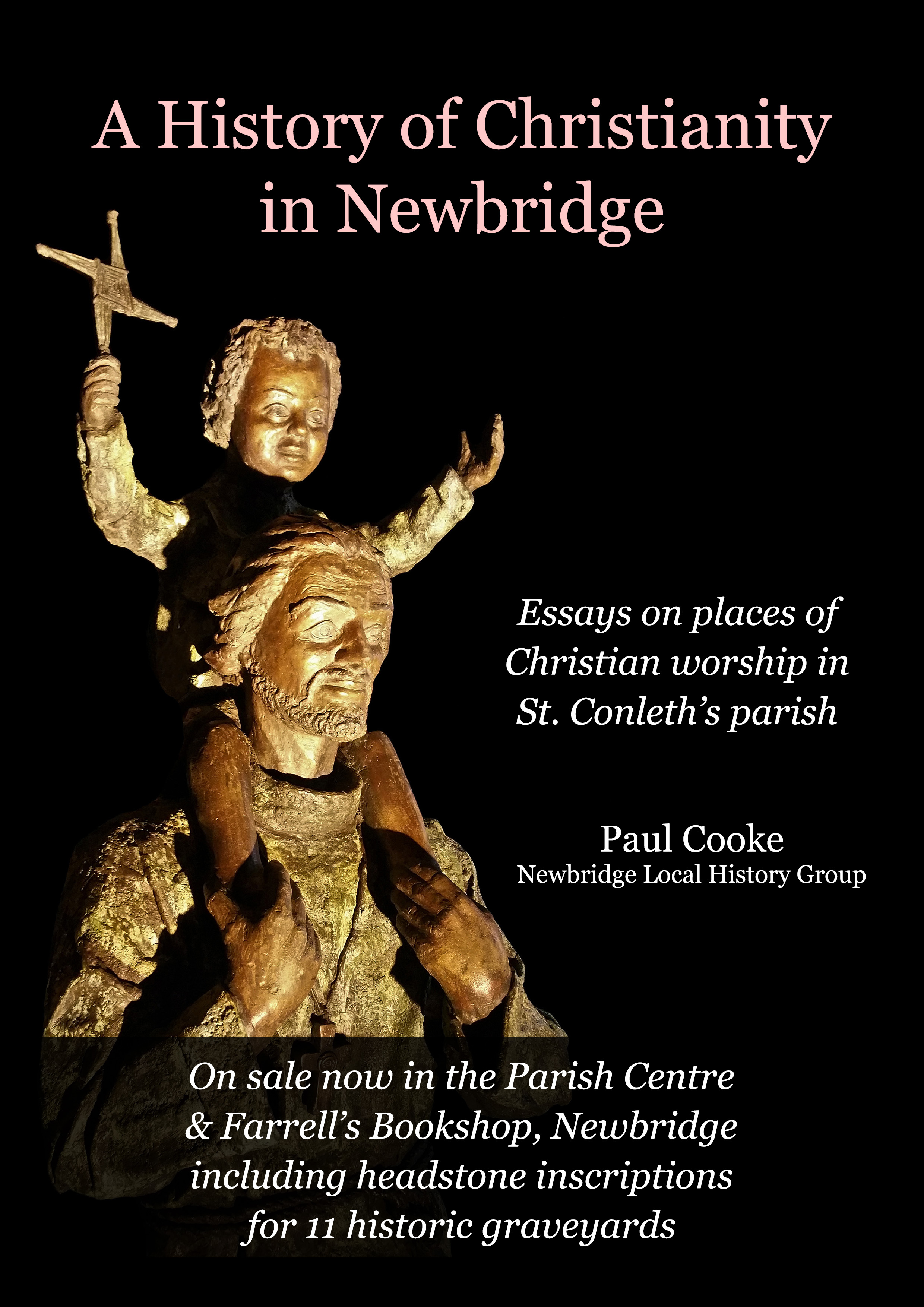Pat Lonergan: Showband Days in Ireland, some Kildare Connections
Showband Days in Ireland – some Kildare connections
Showbands first emerged on to the musical scene in Ireland in the late 1950s, flourished throughout the 1960s, and wavered into the 1970s. 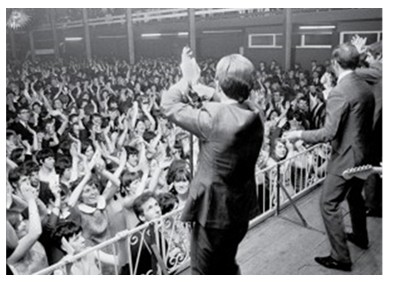 Their heyday occurred during the 1960s – that most inventive of musical decades. In Britain, the ‘swinging sixties’ produced The Beatles, The Rolling Stones and a host of other pop groups, as well as solo singers such as Cliff Richard, Cilla Black, Tom Jones and Engelbert Humperdinck. The USA had Elvis Presley, Roy Orbison and Bob Dylan, bands such as The Beach Boys, The Monkees and The Mamas and the Papas, country music singers such as Johnny Cash, Charley Pride and Dolly Parton, and Motown performers such as Stevie Wonder, The Four Tops and The Supremes. Ireland had the showbands – influenced by the sounds coming from all over the world, yet uniquely Irish and producing our own musical heroes and heroines.
Their heyday occurred during the 1960s – that most inventive of musical decades. In Britain, the ‘swinging sixties’ produced The Beatles, The Rolling Stones and a host of other pop groups, as well as solo singers such as Cliff Richard, Cilla Black, Tom Jones and Engelbert Humperdinck. The USA had Elvis Presley, Roy Orbison and Bob Dylan, bands such as The Beach Boys, The Monkees and The Mamas and the Papas, country music singers such as Johnny Cash, Charley Pride and Dolly Parton, and Motown performers such as Stevie Wonder, The Four Tops and The Supremes. Ireland had the showbands – influenced by the sounds coming from all over the world, yet uniquely Irish and producing our own musical heroes and heroines.
Live musical entertainment in Ireland in the 1950s was mainly provided by Céilí Bands and Dance Bands. Among the most prominent and successful of the Céilí bands was Naas’s own Gallowglass Céilí Band.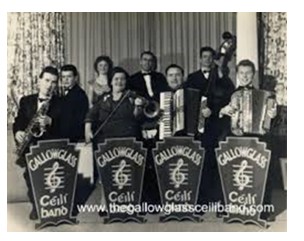
Dance Bands were often, somewhat grandiosely, described as “orchestras”. They typically had between ten and eighteen members, with a line-up of brass, piano, drums and double bass –without a guitar in sight! Prominent among them in County Kildare were Joe O’Neill and the Stardust Orchestra from Athy and Jimmy Dunny and his Orchestra from Newbridge.
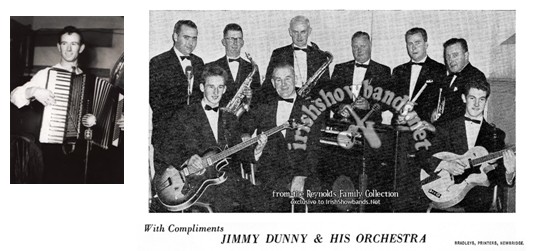
In the second half of the 1950s, some bands began to stand up, come out from behind their music stands and feature a “show” in the middle of the evening’s dancing. The first band to popularise this innovation was The Clipper Carltons from Strabane in County Tyrone, who included in their performances a special feature called “Jukebox Saturday Night”, in which band members dressed up and imitated Elvis Presley, Charlie Chaplin, Laurel and Hardy and other stars of the day. 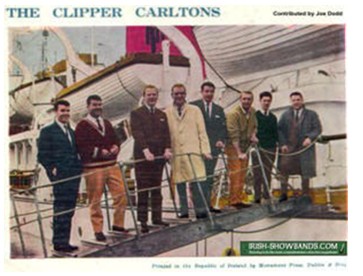 Thus originated the term Showband, which was reputedly coined by Belfast bandleader Dave Glover, who was the first to add the word to his band’s name. When first introduced, the term was used to indicate that the band included a “show” as part of its performance. Later, as the band scene developed throughout the country, the term was used by any band which had the standard line-up.
Thus originated the term Showband, which was reputedly coined by Belfast bandleader Dave Glover, who was the first to add the word to his band’s name. When first introduced, the term was used to indicate that the band included a “show” as part of its performance. Later, as the band scene developed throughout the country, the term was used by any band which had the standard line-up.
Smaller bands began to develop, many from the old Céilí Bands and orchestras. A typical example of this development occurred in County Kildare, when Pat McGarr, leader of the famous Gallowglass Céili Band, decided that rather than transform his own band into a showband, he would put a brand new band on the road and manage it himself, while continuing on with the Gallowglass. Thus the Kings Showband, based in Naas, was born.
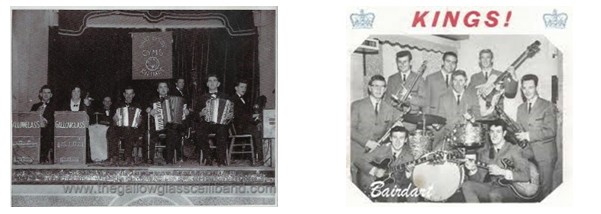
Four of its members came from The Jimmy Dunny Orchestra in Newbridge. This pattern was repeated all over the country as showbands emerged from the larger bands. At the height of the showband boom – in the first half of the 1960s – there was hardly a town in Ireland without a showband or several. It has been reckoned that there were six or seven hundred in total, traversing the country and making a living from making music.
County Kildare made its contribution to the showband scene, with many bands plying their trade in the county from the early days. Among those flying the showband flag in the county were the Adelaide and Sorrento Showbands in Athy – the latter descended from Joe O’Neill’s Stardust Orchestra and Paddens Murphy and his Sorrento Dance Band;
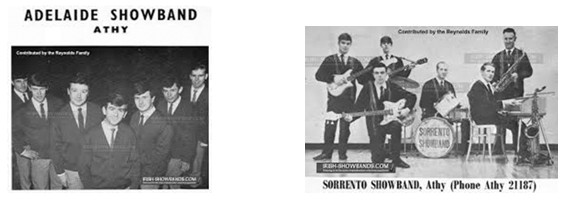
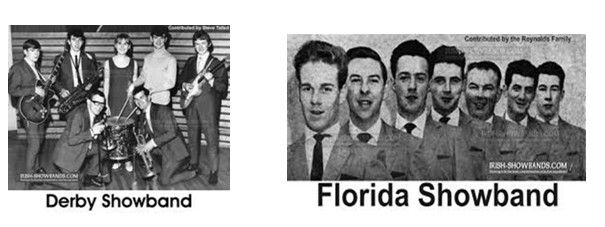
the Derby and Florida Showbands in Kildare; the Calandos and Savannah

Showbands in Newbridge; and the Hi-Lites, Madisons, Breakaways, who later became the Ripchords, and Kings, all based in Naas.
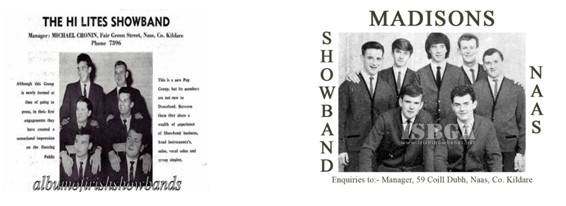

A group of friends from South Kildare got together as a ballad group, and made their first appearance in Fullam’s of Rathangan; they were so successful that they decided to add some members and form a showband.
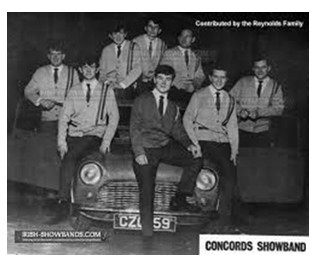 They called themselves the Concords, after the supersonic aeroplane then in development. The Concord is the jet of tomorrow, said their agent; the Concords are the showband of tomorrow.
They called themselves the Concords, after the supersonic aeroplane then in development. The Concord is the jet of tomorrow, said their agent; the Concords are the showband of tomorrow.
There have also been several other Kildare connections with well-known showbands. Peter Law (better known in Naas as Peter Lawlor, of the famous hotel and ballroom family) joined the Pacific Showband in 1968, and made several records with them. The band made several tours of Canada, eventually moving there on a permanent basis; they changed their name to Dublin Corporation and had a hit there with a cover version of the Blue Mink song Melting Pot.
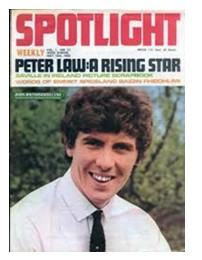
Two showband singers spent their later years in Co. Kildare. Freshman Billy Brown came to live in Johnstown in 1971.
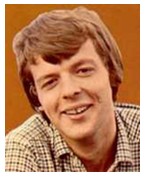
There he continued to write and perform, and developed his interest in nature becoming a successful and collectible painter of nature scenes,]as well as contributing his insights into the natural world on RTE Radio 2’s children's show, Poporama, and regularly played piano at the K Club.
Singer Chris Grace, who became involved in the bookselling trade after his showband days, lived in Newbridge for about the last twenty years of his life. Chris had sung with the Donie Collins Showband and with the Raindrops, and had an Irish top ten hit with Young Love several years before Donny Osmond recorded it.
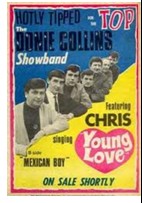
As their experiences and history mirror those of many showbands around the country, I am adding some further details on two of County Kildare’s showbands. The origins of the Derby Showband go back to a trio of friends from Kildare town who got together in the early 1960s to play guitar music - particularly the music of the Shadows. They first called themselves The Squares, later changed to The Strangers. They were asked to provide backing music for a local singer, Seán Breen, for an album recorded for release in North America. For this venture they changed their name again to The Short Grass Trio. The trio eventually broke up, and one of them, Steve Talbot, got together with some other friends who were keen to form a band; so the Derby Showband was born.
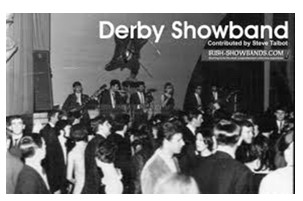
After some personnel changes they settled down with the following line-up: Betty Gibson – Vocals; Steve Talbot – Vocals, Rhythm Guitar and Trombone; Tommy Murphy – Lead Guitar; Louis Melia – Bass Guitar; P.J. Byrne – Saxophone and Accordion; Christy McNamara – Trumpet; and Tony Farrell – Drums. They were managed by a local businessman who had contacts in the showband world, and they got dates around the country and tours in Scotland and London. They played frequently in the CYMS halls in Kildare and Newbridge, in the Ritz ballroom in Carlow and the Entertainment Centre in Arklow, as well as in many of the well-known ballrooms in Dublin, such as the Town & Country in Parnell Square, the Crystal in South Anne Street and the Television Club in Harcourt Street.
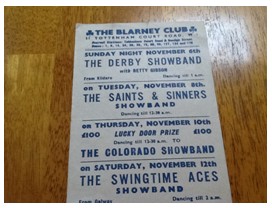
Because the members of the band had other jobs, they tended to limit their performances to weekends where possible. There were no support bands and they could be on stage from 9.00 till 2.00 or from 10.00 till 3.00, and without the services of a ‘roadie’. They unloaded and set up their own gear, and took it down after the show. After some years their manager left the area to pursue other business interests, and they didn’t have the financial resources to continue as a band. They never turned professional or made a recording, and were part of that vast army of bands who had fun, didn’t make much money from it and played and sang largely for the love of it – and made the showband scene what it was.
Christy McNamara also played with the Newbridge-based Savannah Showband and with the Naas-based Hi-Lites. Tony Farrell later played with Dermot Hegarty and the Plainsmen, and was a member of that band when they recorded their major hit 21 Years in 1970.
The Kings shared with many other showbands a lineage descending from Céilí Bands and/or Orchestras. The showband was set up and managed by Pat McGarr of the Gallowglass Céilí Band, and several of its original members came from Jimmy Dunny’s Orchestra in Newbridge. The band’s first line-up was: Pat Braiden – Vocals; Barry Cluskey – Clarinet & Saxophone; Billy Dempsey – Trumpet; Tommy Fitzpatrick – Lead Guitar; Tommy Lundy – Rhythm Guitar; Brendan McEnhill – Fiddle & Saxophone; Frank McEnhill – Bass Guitar; Ronnie Reynolds – Drums.
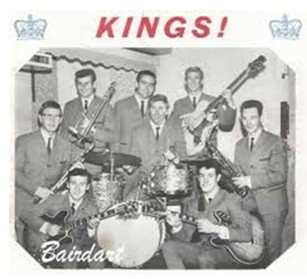
Shortly after the band was set up, Billy Dempsey left and was replaced by Dusty Young on trombone. With this line-up, the band played extensively all over Ireland, and in England. In later personnel changes, Pat Braiden and Tommy Fitzpatrick left the band, and were replaced by Billy Hopkins on bass guitar and Reggie Dunne on lead guitar. Frank McEnhill took over the role of lead vocalist, adopting the stage name of Prince Vince. The band recorded three singles: He’ll only hurt you / Where can she be? in 1965; Beautiful Dreamer / I fall to pieces in 1966; and Amy / For Baby in 1967. As well as playing all over the country, and touring in Britain and the USA, The Kings backed several international stars on their visits to Ireland – stars such as Little Richard, Bill Haley, Jerry Lee Lewis and Roy Orbison. After several successful years, Prince Vince left the band and moved to England. The band continued for some time, bringing in Butch Moore as a guest vocalist for a time. Another well-known musician who played with the Kings for some time was Éamonn Campbell, who later became a prominent record producer and a member of the Dubliners.
No account of the showband scene in Kildare would be complete without mention of the county’s dancing venues. The two big ones were Lawlor’s Ballroom in Naas and the Dreamland Ballroom in Athy. Lawlor’s Ballroom was built in the 1930s and, in the days of the big bands, became one of the best-known and most popular ballrooms in Leinster, hosting all of the major dance bands and orchestras of the era.
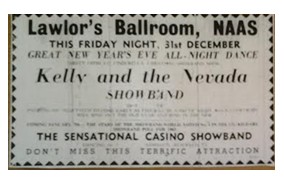
Later, as musical tastes changed, it became one of the most significant venues on the showband circuit. Athy’s Dreamland Ballroom was part of the Reynolds chain of venues. It was opened in 1961 with a double bill comprising the locally-based Paddens Murphy and his Sorrento Dance Band and the British Victor Silvester and his Orchestra. For the occasion a revolving stage was used to glide the local musicians backstage, as the visitors, playing the same tune, came into view. Over the years the Dreamland featured all the country’s top showbands, and had the distinction of hosting the Royal Showband on St. Stephen’s night for five consecutive years. Major international stars such as Kenny Ball, Adam Faith and John Barry also played there. Other popular dancing venues in the county included the CYMS Hall and the Derby House and Railway Arms Hotels in Kildare, the Ideal Ballroom in Prosperous, the Emerald Ballroom in Rathangan, Rathcoffey Hall, Milltown Hall, the Arcadia Ballroom in Kilcock, the John F. Kennedy Hall in Kilcullen, and the Town Halls in Naas and Newbridge. Showbands also played over the years at carnivals and festivals in places such as Cloncurry, Kilcock, Leixlip, Monasterevin, Naas, Rathangan and Robertstown.
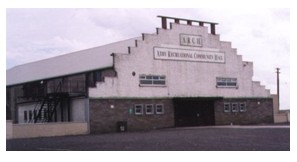
Finally, from among the many stories from the showband days, there is one involving a future Taoiseach who was involved in a road accident while on his way home from a dance in Athy, arising from which he was charged with drunken driving, despite being a life-long teetotaller. Albert Reynolds returned from his honeymoon in Majorca in July 1962 and headed straight for a show dance in the Dreamland Ballroom. Unusually, there was a bar at the dance. When the bar staff failed to show up, Albert, in his typical hands-on manner, got behind the bar. At the end of the night, he packed the takings and the unsold drink into his car and headed for home. He was almost home when he collided with a lorry and skidded into a ditch. The drive shaft of his car was driven through the boot, and the crashed car reeked of whiskey, leading the lorry driver to presume that he had been hit by a drunken driver. Ironically, Albert Reynolds was a teetotaller throughout his life. The charge was reduced to careless driving, and Albert was left with a scar over his eye for the rest of his days.
The showbands impacted not just on the musical history of twentieth century Ireland, but also on its social and economic history. Their contribution to Irish life was recognised in 2001, when then President Mary McAleese hosted a reception for 130 showband veterans at Áras an Uachtaráin, honouring the thousands of musicians who had been part of the showband phenomenon. There was further official recognition of the significant role showbands had played in Irish life when, in September 2010, An Post issued a set of postage stamps featuring four of the most prominent showbands.
The song is ended, but the melody lingers on. The showbands have gone, but the memories remain – even for those of us who were just bystanders, observers and listeners at that unforgettable time.
Excerpted from an illustrated talk presented by Pat Lonergan during June Fest 2016.

